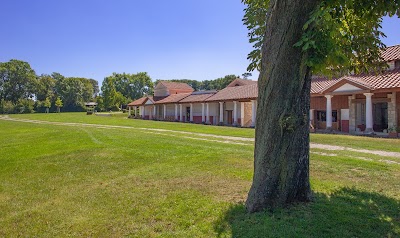Rust (Rust)
Overview
**Discovering Rust: The City of Storks and Wine**
Rust, a picturesque town nestled in Burgenland, Austria, is affectionately known as the "city of storks and wine." With a rich history that traces back to Roman times, this charming locale is a treasure trove of cultural and architectural heritage waiting to be explored.
The tale of Rust begins in the 12th century when it was first recorded under the name "Ceel" by the Hungarians, reflecting the region's deep-rooted connection to vineyards. Wine production became the backbone of Rust’s economy, leading the town to flourish in wealth and prestige by the 17th century. A pivotal moment in its history occurred in 1681 when Rust’s vintners secured town status and imperial directness from Emperor Leopold I by paying an impressive sum of 60,000 florins along with 30,000 liters of their finest wine. This remarkable investment highlights the unique bond between the town and its viniculture.
One of Rust's most captivating features is its well-preserved medieval architecture. As you stroll through the cobblestone streets, you'll encounter meticulously restored homes that showcase a variety of architectural styles, ranging from Gothic to Baroque. These buildings, adorned with pastel-colored façades and intricate doorways, provide a glimpse into the town’s opulent past. Look closely, and you’ll find many houses still displaying ornate wrought-iron signs that point to their historic wine cellars, inviting you to uncover Rust’s vinous treasures.
A must-visit landmark is the **Fischerkirche**, or Fishermen's Church. This charming fortified church, dating back to the 11th century, stands as a testament to the town’s architectural legacy. Originally established by local fishermen, the church beautifully merges Romanesque and Gothic elements, making it an intriguing site for history buffs.
Another highlight of Rust is the **Rathaus**, or Town Hall, a magnificent Renaissance structure that has served as the political and administrative heart of the town for centuries. Built in the 17th century, the Rathaus showcases a blend of Italian and local architectural influences, making it a striking example of Rust’s rich historical tapestry.
Rust's relationship with storks is nothing short of legendary. The town is famous for its white storks, which nest on chimneys and rooftops. These majestic birds migrate from Africa, returning every spring to symbolize good fortune and prosperity. The residents take great pride in maintaining stork-friendly habitats, ensuring that these magnificent creatures feel at home in Rust.
For those looking to indulge in local flavors, Rust offers several traditional wine taverns known as **Heurigen**. These cozy establishments provide the perfect setting to taste regional wines and enjoy hearty local dishes. Often accompanied by live music under the open sky, the Heurigen embody the vibrant community spirit of Rust.
In recent years, Rust has embraced sustainable tourism, focusing on preserving its unique heritage while welcoming visitors from around the globe. The local government has implemented various initiatives to maintain the town’s historical charm and natural beauty, including the conservation of traditional vineyards, the promotion of eco-friendly practices, and support for cultural festivals celebrating Rust’s rich heritage.
One of the standout events is the annual **Lake Festival**, held along the shores of Lake Neusiedl. This lively celebration attracts countless visitors with its vibrant atmosphere, featuring boat processions, folk music, and a dazzling firework display. The festival encapsulates the joyful spirit and community engagement that define Rust.
With its blend of history, stunning architecture, fine wine, and natural beauty, Rust offers a timeless escape into the heart of Austria. Whether you’re wandering through ancient streets, savoring celebrated wines, or simply enjoying the sight of storks soaring gracefully above, Rust promises an experience rich with stories and traditions. This harmonious coexistence of the past and present makes Rust a unique gem in Burgenland, Austria.








